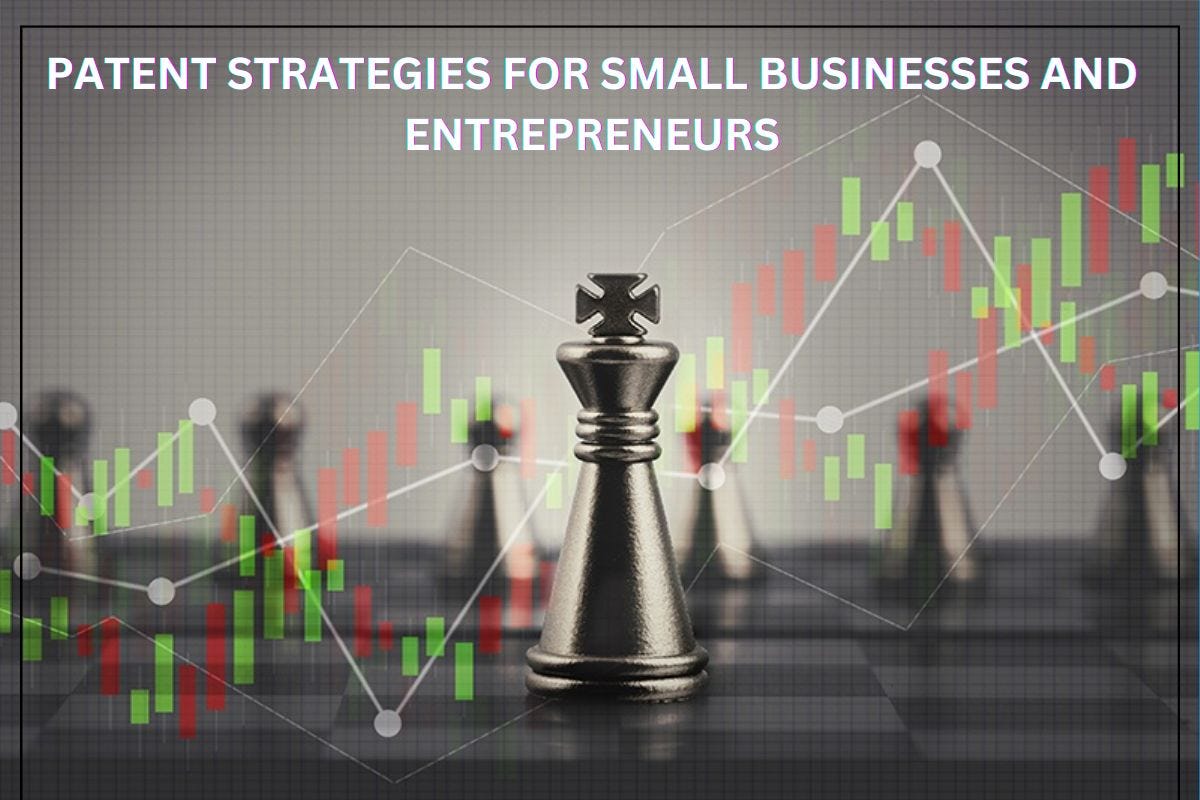Introduction
Patents serve as the cornerstone of innovation, offering legal protection and incentivizing inventors to develop groundbreaking ideas that drive progress across industries. For small businesses, securing patents is not just a means of safeguarding intellectual property but a strategic imperative for competing in today’s dynamic marketplace. In this comprehensive guide, we delve into the intricate world of patents, focusing on the diverse array of protections available to small businesses.
At its core, a patent represents a legal right granted by the government to an inventor, providing exclusive ownership over an invention for a specified period. This exclusivity empowers small businesses to capitalize on their innovative concepts, shielded from infringement by competitors. However, navigating the landscape of patents can be daunting, especially for entrepreneurs with limited resources and expertise.
Our exploration begins with an examination of the three primary types of patents: utility, design, and plant patents. Each category offers distinct advantages and requirements, tailored to accommodate a wide spectrum of inventions. We delve into the nuances of each patent type, elucidating the eligibility criteria, duration of protection, and renewal processes, equipping small business owners with the knowledge needed to make informed decisions about their intellectual property strategies.
Beyond elucidating the types of patents available, we illuminate the tangible benefits that patent protection affords to small businesses. From safeguarding inventions against unauthorized use to gaining a competitive edge in the marketplace, patents serve as invaluable assets that can bolster the success and longevity of entrepreneurial ventures. Furthermore, we delve into the potential avenues for revenue generation through licensing or selling patented technologies, opening new doors for small businesses to monetize their intellectual capital.
However, amidst the promise of patent protection lie myriad challenges and considerations that small businesses must navigate. We delve into the complexities of patenting, exploring the financial costs, time investments, and risks of infringement that accompany the pursuit of patent protection. Additionally, we highlight the importance of international considerations in an increasingly interconnected global economy, underscoring the need for small businesses to navigate the intricacies of patent laws across jurisdictions.
To equip small business owners with the tools needed to navigate the patenting process effectively, we outline practical strategies and best practices for securing and managing patents. From conducting thorough patent searches to leveraging professional expertise, we provide actionable insights tailored to the unique needs and constraints of entrepreneurial ventures.
In conclusion, this guide serves as a comprehensive roadmap for small businesses seeking to harness the power of patents to protect and monetize their innovative ideas. By demystifying the patenting process and providing actionable guidance, we empower entrepreneurs to unlock the full potential of their intellectual property, driving forward innovation and prosperity in the small business ecosystem.
Types of Patents
Patents are essential assets for small businesses, offering legal protection and exclusive rights to innovative concepts and inventions. Understanding the different types of patents is crucial for entrepreneurs seeking to safeguard their intellectual property and capitalize on their innovations. In this section, we explore the three primary categories of patents: utility patents, design patents, and plant patents, providing comprehensive insights into their purposes, eligibility criteria, duration of protection, and renewal processes.
Utility Patents
Utility patents represent the most common type of patent and cover new and useful processes, machines, compositions of matter, or improvements thereof. They offer broad protection for a wide range of inventions, including technological innovations, manufacturing processes, and pharmaceutical compositions. To qualify for a utility patent, an invention must meet stringent criteria, including novelty, non-obviousness, and utility. We delve into the intricacies of utility patents, elucidating the requirements for patentability and providing examples of eligible inventions across various industries. Additionally, we outline the duration of protection for utility patents, typically lasting 20 years from the date of filing, and explore the process of renewal to maintain patent rights beyond the initial term.
Design Patents
Design patents focus on protecting the ornamental or aesthetic aspects of a product, rather than its functional features. They are ideal for small businesses operating in design-intensive industries such as fashion, consumer electronics, and furniture. Design patents offer exclusivity over the visual appearance of a product, preventing others from producing or selling identical or substantially similar designs. We examine the distinct eligibility criteria for design patents, emphasizing the importance of originality and ornamental design in securing protection. Furthermore, we discuss the duration of design patent protection, which typically lasts for 15 years from the date of grant, and explore the renewal process to extend protection beyond the initial term.
Plant Patents
Plant patents are unique in that they protect new and distinct varieties of asexually reproduced plants, such as hybrid roses or genetically modified crops. They offer small businesses in the agricultural and horticultural sectors the opportunity to secure exclusive rights over their novel plant varieties, preventing competitors from replicating or selling them without authorization. Plant patents require demonstration of novelty, asexually reproduced nature, and distinctiveness from existing plant varieties. We delve into the intricacies of plant patents, highlighting the criteria for patentability and providing examples of eligible plant varieties. Additionally, we explore the duration of plant patent protection, which typically lasts for 20 years from the date of filing, and discuss the process of renewal to maintain exclusive rights over the patented plant variety.
By gaining a comprehensive understanding of the different types of patents available, small businesses can strategically leverage patent protection to safeguard their innovations and gain a competitive edge in the marketplace. Whether pursuing utility, design, or plant patents, entrepreneurs can capitalize on the diverse array of intellectual property protections to drive innovation, protect market share, and enhance the value of their businesses.
Benefits of Obtaining Patents for Small Businesses
Securing patents offers myriad benefits for small businesses, empowering them to protect their intellectual property, gain a competitive advantage, generate revenue, and explore new opportunities for growth and innovation. In this section, we delve into the tangible advantages that patent protection affords to entrepreneurial ventures, elucidating how patents serve as valuable assets that can propel small businesses to success.
Protection of Intellectual Property
Patents provide small businesses with robust legal protection for their innovative ideas and inventions, shielding them from unauthorized use or exploitation by competitors. By securing patents, entrepreneurs establish a barrier to entry in the marketplace, preventing others from replicating or profiting from their proprietary technologies. This exclusivity fosters a conducive environment for innovation, incentivizing small businesses to invest in research and development without fear of intellectual property theft or infringement.
Competitive Advantage
Patent protection confers a significant competitive advantage in the marketplace, enabling small businesses to differentiate their products or services and establish a unique selling proposition. By securing exclusive rights over their innovations, entrepreneurs can command higher prices, attract customers, and capture market share more effectively. Additionally, patents serve as a deterrent to competitors, dissuading them from developing similar products or technologies and preserving the market position of small businesses.
Revenue Generation
Patents offer small businesses a variety of opportunities for revenue generation, including licensing, royalties, and strategic partnerships. By licensing their patented technologies to third parties, entrepreneurs can generate passive income streams while leveraging the expertise and resources of established companies. Furthermore, patents enhance the attractiveness of small businesses to investors and potential acquirers, increasing their valuation and facilitating capital infusion for growth and expansion. Additionally, patents can serve as bargaining chips in negotiations with competitors, enabling small businesses to extract favorable terms and collaborations that drive value creation.
Potential for Licensing or Selling Patents
Patents provide small businesses with the option to monetize their intellectual property assets through licensing or outright sale. By licensing their patented technologies to other companies, entrepreneurs can leverage their innovations across multiple markets and industries, expanding their reach and maximizing their revenue potential. Alternatively, selling patents outright offers small businesses the opportunity to realize immediate returns on their intellectual property investments, freeing up capital for further innovation or strategic initiatives. Whether pursuing licensing or selling patents, small businesses can unlock new avenues for revenue generation and strategic growth while retaining ownership of their core business operations.
In summary, obtaining patents offers small businesses a myriad of benefits, ranging from protection of intellectual property to competitive advantage, revenue generation, and strategic opportunities for growth and innovation. By harnessing the power of patent protection, entrepreneurial ventures can safeguard their innovations, drive market success, and capitalize on the full potential of their intellectual capital, propelling them to sustained prosperity and leadership in their respective industries.
Challenges and Considerations for Small Businesses
While the benefits of obtaining patents for small businesses are substantial, navigating the patenting process entails various challenges and considerations that entrepreneurs must carefully navigate. In this section, we explore the key hurdles and strategic considerations that small businesses encounter when seeking patent protection for their innovations.
Cost of Patenting
One of the primary challenges for small businesses is the financial cost associated with the patenting process. Securing a patent involves expenses such as filing fees, attorney fees, and maintenance fees, which can quickly add up, especially for entrepreneurs with limited resources. Additionally, pursuing international patent protection incurs additional costs, further burdening small businesses seeking to expand their market reach. Balancing the potential benefits of patent protection against the upfront costs requires careful financial planning and strategic decision-making on the part of small business owners.
Time Involved in the Patenting Process
The patenting process is inherently time-consuming, requiring small businesses to invest significant time and resources in preparing and prosecuting patent applications. From conducting prior art searches to drafting patent specifications and responding to office actions from patent examiners, the process can take several years to complete. Moreover, delays in the examination process and backlogs at patent offices further prolong the time to obtain patent protection. Navigating these time constraints necessitates patience, diligence, and effective project management on the part of small business owners.
Patent Infringement Risks
Even with patent protection in place, small businesses face the risk of patent infringement by competitors or third parties. Detecting and enforcing patent rights against infringers requires proactive monitoring and enforcement strategies, often involving litigation or licensing negotiations. However, litigation costs can be prohibitively expensive for small businesses, making enforcement actions challenging to pursue. Additionally, the global nature of commerce introduces complexities in enforcing patents across different jurisdictions, requiring small businesses to navigate diverse legal systems and cultural norms.
International Considerations
Expanding into international markets presents unique challenges and considerations for small businesses seeking patent protection. While patents offer territorial rights within the jurisdiction of issuance, securing global patent protection requires navigating the intricacies of international patent laws and treaties. Small businesses must carefully evaluate the cost-effectiveness of pursuing patents in multiple countries and prioritize markets based on strategic considerations and market potential. Additionally, cultural and linguistic differences pose challenges in communication and collaboration with foreign patent offices and legal professionals, highlighting the importance of cultural competency and international partnerships.
In summary, while patent protection offers significant advantages for small businesses, navigating the associated challenges and considerations requires careful planning, resource allocation, and strategic decision-making. By addressing the financial, temporal, legal, and international aspects of the patenting process, entrepreneurs can effectively mitigate risks, maximize opportunities, and harness the full potential of their intellectual property assets to drive innovation, growth, and competitiveness in the global marketplace.
Strategies for Small Businesses
Navigating the patenting process effectively requires small businesses to adopt strategic approaches and best practices tailored to their unique needs and constraints. In this section, we explore practical strategies and actionable insights to help entrepreneurs maximize the value of their intellectual property assets and navigate the complexities of the patenting process.
Conducting Patent Searches
Before embarking on the patenting journey, small businesses should conduct comprehensive patent searches to assess the novelty and patentability of their inventions. Patent searches involve scouring patent databases, scientific literature, and other relevant sources to identify prior art and existing patents that may impact the patentability of the invention. By conducting thorough patent searches, entrepreneurs can evaluate the competitive landscape, identify potential obstacles, and refine their patent strategy accordingly, saving time and resources in the long run.
Prioritizing Patent Applications
Given the financial constraints and time limitations faced by small businesses, it is essential to prioritize patent applications based on strategic considerations and market potential. Not all inventions may warrant patent protection, and entrepreneurs must assess the commercial viability and competitive advantage of each invention before committing to the patenting process. By focusing on high-value inventions with significant market demand and differentiation, small businesses can allocate resources more effectively and maximize the return on their patent investment.
Seeking Professional Help
Navigating the patenting process can be daunting for small businesses, especially those without expertise in intellectual property law and patent prosecution. Seeking professional assistance from patent attorneys, agents, or consultants can provide invaluable guidance and expertise throughout the patenting journey. Experienced professionals can help small businesses navigate the intricacies of patent law, draft robust patent applications, and navigate the examination process to secure patent protection efficiently. Additionally, patent professionals can offer strategic advice on portfolio management, licensing negotiations, and enforcement strategies, empowering entrepreneurs to make informed decisions about their intellectual property assets.
Leveraging Patent Databases and Resources
Small businesses can leverage a wealth of patent databases, tools, and resources to streamline the patenting process and enhance their patent strategy. Online patent databases such as the United States Patent and Trademark Office (USPTO) website, Google Patents, and Espacenet provide access to millions of patent documents worldwide, enabling entrepreneurs to conduct prior art searches, monitor competitor activity, and stay informed about emerging technologies and trends. Furthermore, organizations such as Small Business Development Centers (SBDCs), academic institutions, and industry associations offer workshops, seminars, and resources tailored to the needs of small businesses, providing valuable support and guidance in navigating the patenting process.
In summary, adopting strategic approaches and leveraging resources can empower small businesses to navigate the patenting process effectively, maximize the value of their intellectual property assets, and capitalize on opportunities for innovation and growth. By conducting patent searches, prioritizing patent applications, seeking professional help, and leveraging patent databases and resources, entrepreneurs can enhance their patent strategy, mitigate risks, and position themselves for success in the competitive marketplace.
Conclusion
In conclusion, patents represent invaluable assets for small businesses, offering legal protection, competitive advantage, revenue generation opportunities, and strategic pathways for growth and innovation. Throughout this guide, we have explored the diverse array of benefits, challenges, and strategies associated with obtaining patents for entrepreneurial ventures.
By securing patents, small businesses can safeguard their innovative ideas and inventions, establishing a barrier to entry in the marketplace and preventing competitors from exploiting their intellectual property. Furthermore, patents confer a significant competitive advantage, enabling small businesses to differentiate their products or services, command higher prices, and capture market share more effectively.
Moreover, patents offer small businesses various opportunities for revenue generation, including licensing, royalties, and strategic partnerships. By monetizing their intellectual property assets, entrepreneurs can unlock new avenues for growth and diversification, enhancing the value and resilience of their businesses in an ever-changing market landscape.
However, navigating the patenting process entails various challenges and considerations, including financial costs, time constraints, enforcement risks, and international complexities. Small businesses must carefully weigh these factors and adopt strategic approaches to maximize the value of their patent portfolio and mitigate risks effectively.
To navigate the patenting process effectively, small businesses can adopt practical strategies such as conducting patent searches, prioritizing patent applications, seeking professional help, and leveraging patent databases and resources. By adopting a proactive and strategic approach to patent management, entrepreneurs can optimize their patent strategy, protect their intellectual property assets, and capitalize on opportunities for innovation, growth, and competitiveness in the global marketplace.
In essence, patents serve as powerful tools for small businesses to protect, monetize, and leverage their innovative ideas, driving forward progress and prosperity in the small business ecosystem. By harnessing the full potential of patents, entrepreneurs can unlock new pathways for success and establish themselves as leaders in their respective industries, contributing to economic growth, job creation, and societal advancement.





